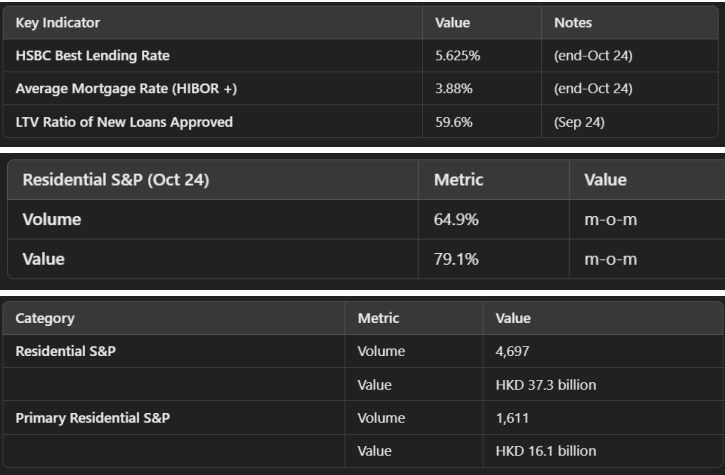A CLOSER LOOK INTO THE PRIVATE HOUSING SUPPLY
Recent market dynamics reveal a complex interplay between strengthening demand indicators and persistent supply concerns. While robust rental growth, population inflows, and moderating mortgage rates signal a recovery in demand, the price war in the primary market and mixed sales performance highlight ongoing supply pressures. The critical question remains: will this supply overhang outweigh the emerging demand recovery?
The Housing Bureau projects 108,000 private residential units to be available in the next three to four years—a modest 10% increase from 2021’s peak market levels when the home price index reached its historic high. A more meaningful assessment of market balance can be derived by analyzing the “months of supply” metric, which relates unsold units in completed projects and projects under construction to the primary transaction volume over the past 12 months.
This indicator has traced a revealing pattern: from 54.4 months in December 2021, it rose significantly to 95.4 months in 2022 and peaked at 101.6 months in 2023, reflecting the downturn phase of the cycle. Recent data shows a moderation to 78.2 months as of September 2024, suggesting improving absorption dynamics. Looking ahead to 2025, assuming primary market transaction volumes normalize to 18,000 units annually (less than 10% above the projected 2024 level), the months of supply could moderate to 58.0 months by December 2025—approaching levels observed during more balanced periods, notably in 2021.
While current inventory metrics indicate elevated levels of unsold units in completed projects and those under construction, forward-looking supply indicators present a contrasting picture. Most notably, the volume of potential units from disposed sites—where construction could commence immediately—has declined to 10,000 units as of September 2024, the lowest level since data collection began in 2012 and a marked decrease from 25,000 units in March 2023. This structural shift in the supply pipeline suggests potential moderation in medium term inventory growth, even as the market works through current stock levels.
Meanwhile, developers’ active management of their development pipelines suggests that the effective housing supply may prove more moderate than aggregate statistics indicate. Supply management strategies have emerged across multiple channels, including adjustments to construction timelines, project repurposing, and optimizing project launch schedules.
SHKP’s modification of its So Kwun Wat project timeline, citing design changes, exemplifies this trend. Additionally, in 2024, at least seven residential developments released a portion of their unsold units for leasing, representing an adjustment to the disposal pipeline. These strategic responses to market conditions introduce meaningful divergence between headline supply figures and realized inventory, potentially accelerating the convergence toward healthy inventory levels beyond current projections.
Looking ahead, key macroeconomic headwinds that have pressured Hong Kong’s residential market show signs of moderation, though geopolitical uncertainties—particularly the potential escalation of the US-China trade war—remain a primary concern. While current market conditions suggest a complex path to recovery, improving fundamentals indicate potential for market stabilization.

Want to gain deeper insights into the housing market and what the future holds for you? Contact us today for personalized advice and stay ahead of the curve!
Data extracted in January 2025
